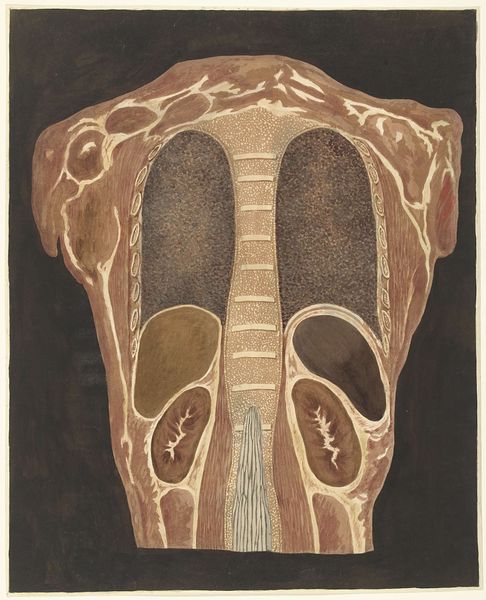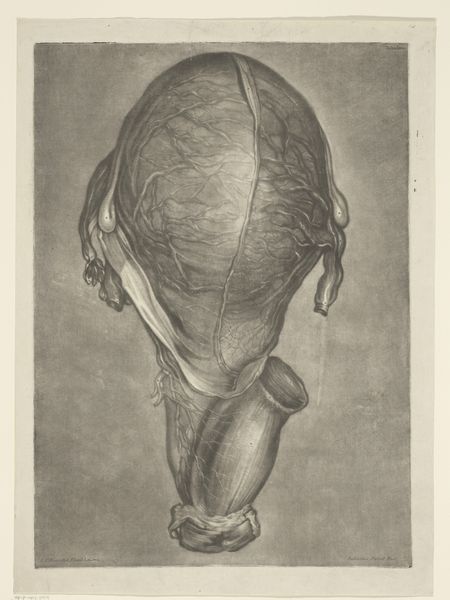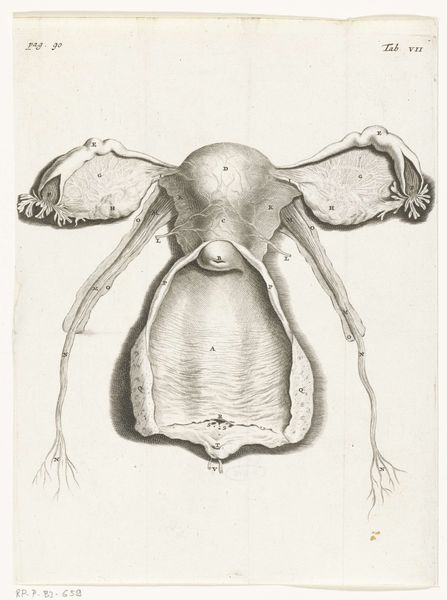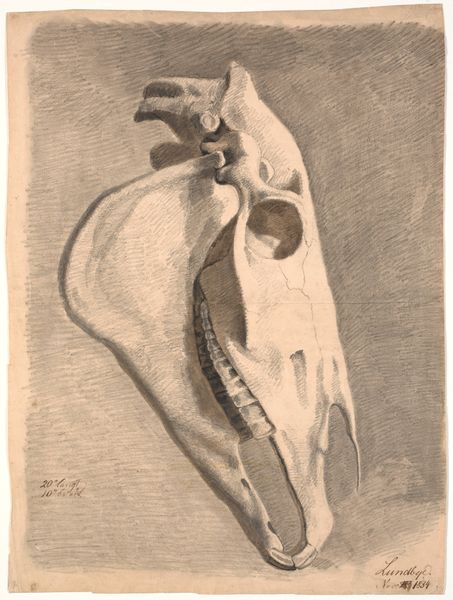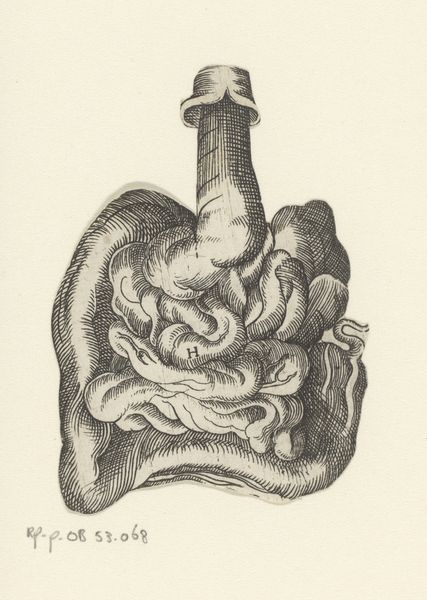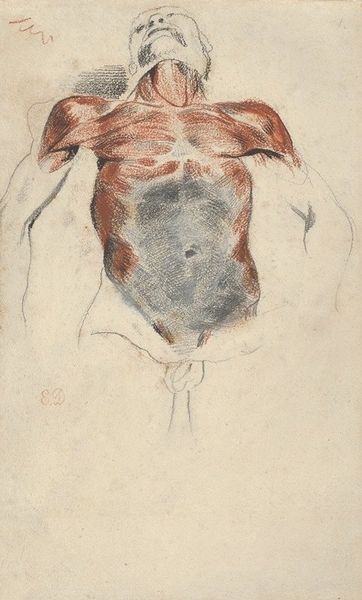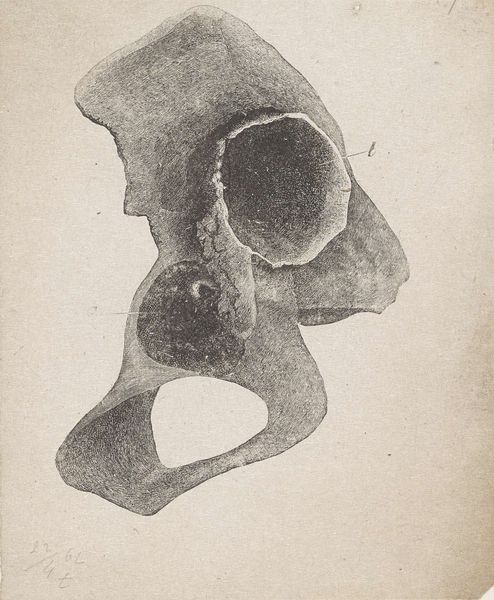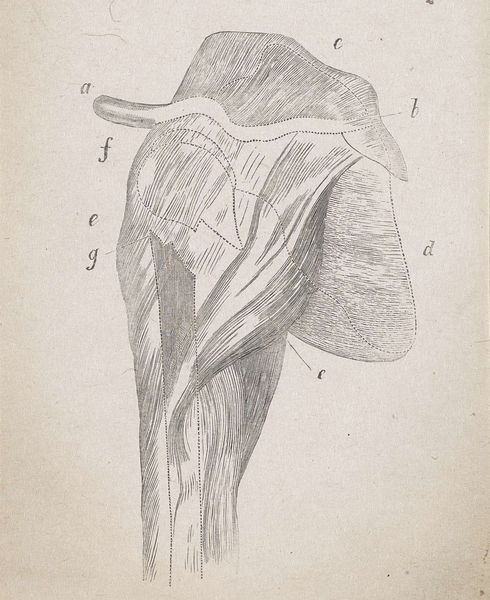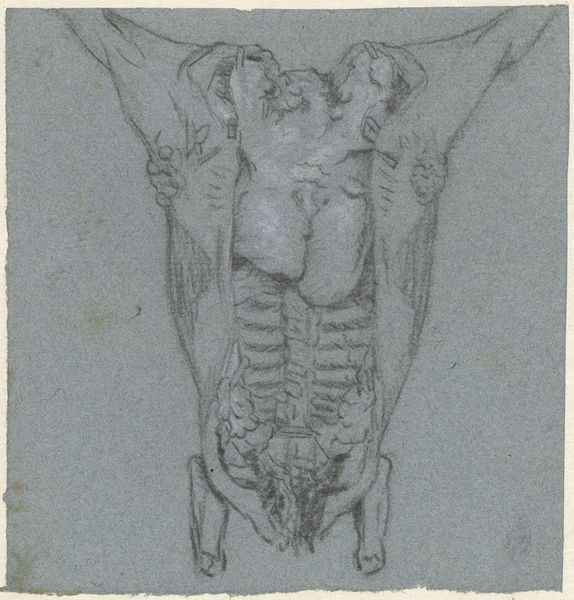
Anatomische studie van de organen in de borstkas, gezien vanuit de rug 1778 - 1838
0:00
0:00
drawing, print, paper, ink, engraving
#
drawing
# print
#
woodcut effect
#
figuration
#
paper
#
ink
#
pencil drawing
#
history-painting
#
academic-art
#
engraving
Dimensions: height 575 mm, width 470 mm
Copyright: Rijks Museum: Open Domain
Curator: Looking at this anatomical study from the Rijksmuseum, I’m struck by its almost eerie beauty. Created sometime between 1778 and 1838 by Anthonie van den Bos, it’s titled "Anatomische studie van de organen in de borstkas, gezien vanuit de rug"—that’s "Anatomical study of the organs in the chest, seen from the back". Editor: Wow, “eerie beauty” is right! It has a shadowy feel—all muted grays and blacks. The stark contrast makes the shapes so graphic, almost otherworldly. Is this print or drawing? Curator: Actually, it’s a combination of media: engraving and ink on paper. You get a really tactile sense from it; the veins and bones look almost fossilized. Editor: And so meticulously rendered! Considering the period, it reflects this cultural obsession with the body as both scientific subject and artistic form. How accessible would this have been to the public? Curator: That's an interesting question. Prints like these served a dual purpose, circulating within medical communities for study but also influencing a broader cultural understanding of the human form. There's a public role there that is complex. Editor: I wonder how it felt for the artist creating something so clinical and personal. The way each rib is delineated, or how the arteries trace, like little river tributaries. Does the artist leave himself, a bit of self even, imprinted here, so that it mirrors how, in some very small sense, the body, so too contains what one feels? Curator: Well, even though it’s academic in style, the very act of choosing how to depict the subject—the emphasis on certain textures, the play of light and shadow—reveals artistic intent. I suppose some kind of self. Even an anatomical drawing of something internal, speaks perhaps something of the external too. Editor: I suppose. I was simply contemplating how Van den Bos walked that line. A clinical representation that, however cold, might still be a piece of a person on the page, too. Curator: It certainly makes one ponder what it meant to dissect and display the human form then. And what those public functions of imagery might suggest about our present, still, in looking? Editor: Indeed! A potent blend of art, science, and history.
Comments
No comments
Be the first to comment and join the conversation on the ultimate creative platform.
